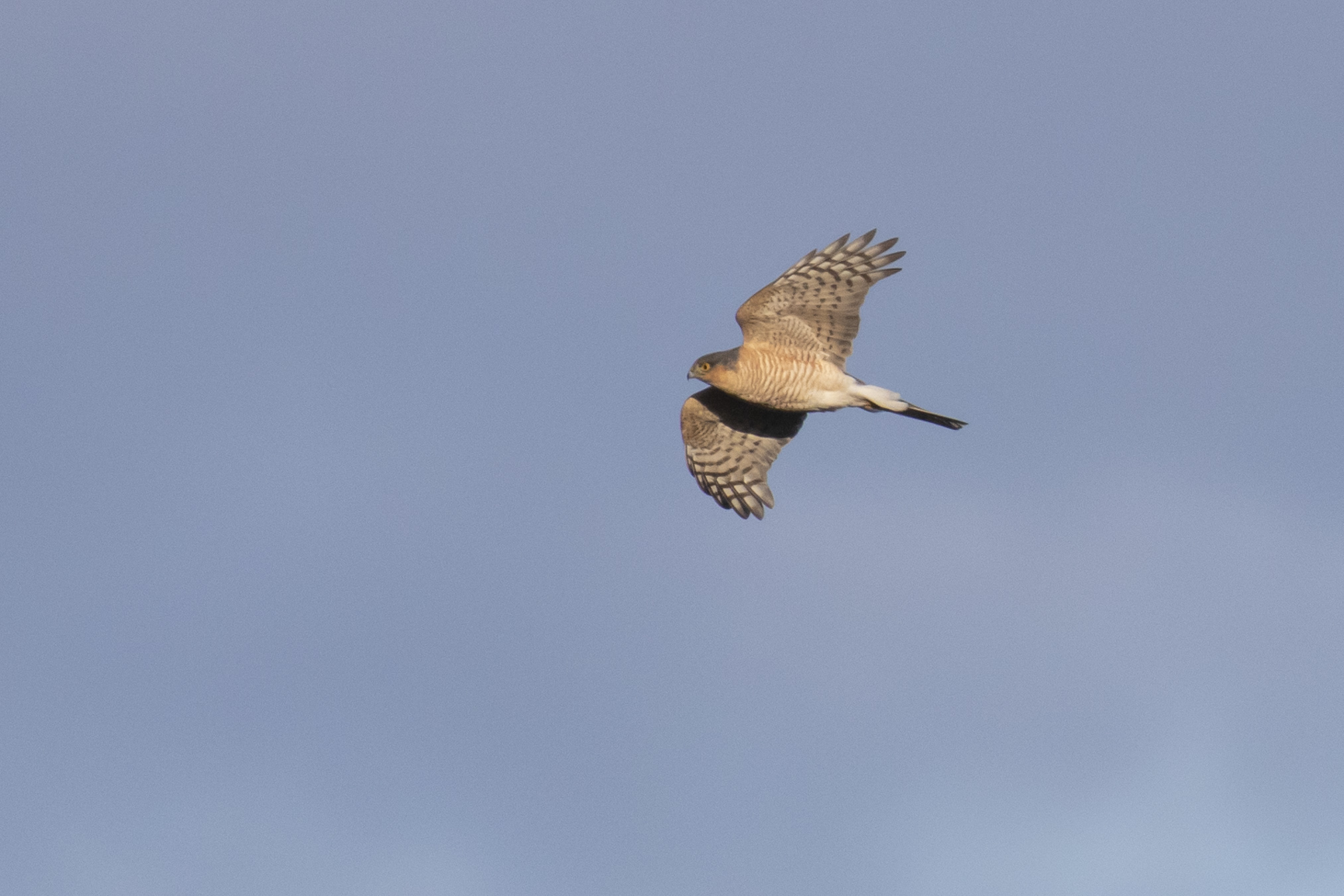This is a summary of the birds (and some other wildlife) recorded in the Lye Valley and Warneford Meadow area between 20th March and 20th May 2021. There was a brief warm spell in late March, just before Easter, which saw the arrival of a few summer migrants. Then temperatures fell away, resulting in weeks of cold weather, including a remarkable mid-April snowfall. Nationally, spring 2021 was very cold and then very wet! April 2021 had the highest number of days with air-frost ever and was the third coldest on record. May 2021 looks like being the wettest on record. Neither of these factors are beneficial to migrant or breeding birds.

In this 61 day period, there were a combined total of 89 visits recorded on eBird to the Lye Valley and Warneford Meadow area. 59 species were recorded in March; 61 in April and 53 in May. By 20th May, 73 species in total had been recorded this year. 40 or more species were recorded on four days: 20th March; 9th April; 17th April and 1st May.
Sub-zero mornings became a routine, with dawn visits beginning by crunching through heavy frost, well into May:

In the freezing temperatures, some bird species would sit facing the rising sun to gather what warmth they could:

Later in the spring, the local pair of Sparrowhawks would begin displaying:

Early spring sees waterbirds on the move and occasionally such birds would pass over the Lye Valley:


However, most waterbird migration is nocturnal. Isaac West and I spent a few nights in late March listening and recording nocturnal migrants. See this post for details of a spectacular night, on 23rd March, when we heard migrating Common Scoter, Coot and Wigeon, as well as recording the first Barn Owl for the area.
Back in daylight hours, despite the temperatures, nesting behaviour could still be seen:



The rarity highlight of the spring occurred on 10th April when a Ring Ouzel flew over myself and Phil Barnett in Warneford Meadow. A few hours later a male Ring Ouzel was located in Marston Meadows in Oxford, perhaps the same bird? Ben Sheldon has been regularly visiting Aston’s Eyot, by the River Thames just off the Iffley Road, some one mile to the west of the Lye Valley area. Eight days after the Ring Ouzel flyover, I received the sort of text message that sends the inland local patch birder into cardiac arrest:

We can forgive Ben his typo. I know what seeing Bar-tailed Godwit migrating over your patch does to your adrenaline levels. It is incredible that Bar-tailed Godwit have been recorded flying over Oxford city in two successive years. I ran up to the nearest point with a view of the sky and scanned desperately, but to no avail. Ben followed this with reports of Marsh Harrier and singing Redshank overhead, neither of which materialised over the Lye Valley either!
The cold weather took a dramtic turn on 12th April with a heavy fall of snow, documented here:

Fortunately, despite several centimeters of snow, it had melted by lunchtime. The surreal sight and sound of a Willow Warbler singing in the snow was remarkable:

Once the snow was gone, spring behaviour returned. I have noticed Jays flocking together in large groups in April in a number of years now:

There were also drumming woodpeckers and displaying Treecreepers, whilst Siskins and Lesser Redpolls remained into late-April this year, much later than usual:

This spring was a good month for falcons, with three records of Peregrine and two records of Hobby, as well as the local breeding pair of Kestrels.


By mid-April first young birds were appearing. These Tawny Owlets were exceptionally early and would huddled together for warmth on cold mornings:


The local Pheasants provided regular entertainment, displaying from mounds on Southfield Golf Course, before literally pulling chunks of feathers from each other


When seen, Muntjack Deer usually freeze, then run. This male, choose a different approach, by attempting to hide in low vegetation, just off the main path in the Lye Valley. I walked past and noticed the glowing white horns. I took a few pictures, then moved away:


In many ways, this was a spring of hunkering down in first cold, and then very wet, conditions. The second Sedge Warbler for the area was found singing on 27th April. A Kingfisher was seen twice on Boundary Brook, on 1st and 6th May, the latter sighting by myself and Dave Lowe, as he carried out his biannual Breeding Bird Survey for the BTO. This Kingfisher was the 99th species of bird recorded in the Lye Valley area on eBird. The full illustrated list of birds seen in Lye Valley and Warnford Meadow can be found here. What, and when, will be species number 100?
